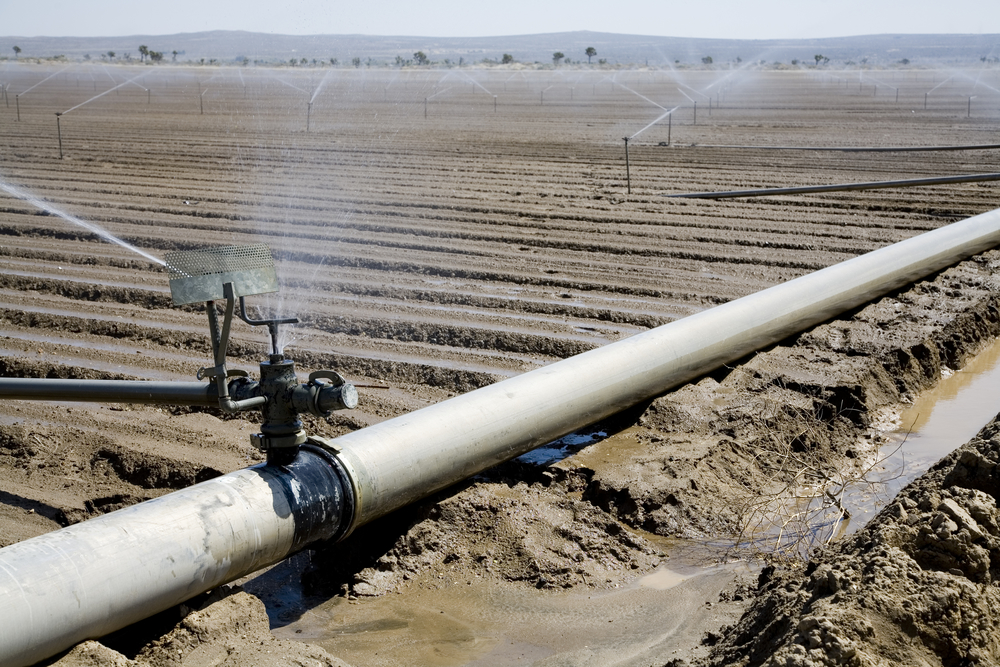Water is a source of life but can present an unnerving challenge when it threatens the stability of a construction site. Dewatering becomes an essential practice that every construction project must pay attention to. Dewatering pipes are critical assets in this endeavor, ushering the unwanted water away from the site and ensuring optimal site conditions. Here is everything you need to know about the dewatering process.
Dewatering Construction Sites: A Comprehensive Guide to Success
Read the holistic guide to dewatering:
Crucial Role: Why is dewatering a construction site essential?
- Stability: Dewatering increases the soil’s strength and stability, making it easier to excavate and build upon.
- Safety: Removing excess water minimizes the risk of site accidents and injuries.
- Prevention: Dewatering prevents the potential of costly structural damage and delays due to flooding.

Environmental Damage: Does Improper Dewatering Pose Environmental Risks?
Don’t overstate the environmental implications of improper dewatering:
- Contamination: Incorrectly managed dewatering can lead to contaminants seeping into nearby water bodies.
- Erosion: Uncontrolled discharge may erode the land, disrupting local ecosystems.
The Right Path: What Is the Dewatering Discharge Method?
It refers to the way water is expelled from the construction site:
- On-Site Discharge: If site conditions and local regulations permit, water may be discharged directly on the construction site. This method allows the water to naturally seep into the ground. It’s most effective when the excavated soil is sufficiently permeable and capable of absorbing and filtering the discharged water. Ensuring the water isn’t contaminated is vital, as this could harm the site’s ecosystem.
- Adjacent Land Discharging: This method requires due permission from the landowner and must be done in a manner that doesn’t cause erosion or flooding. Like on-site discharge, the discharged water must be free of harmful contaminants.
- Off-Site Discharge: In cases where on-site or adjacent land discharging aren’t possible or suitable, the water may be transported to a designated off-site location. This method is typically useful when the water volume is large or there’s a contamination risk. The off-site location should ideally be equipped to handle and treat the water as needed.
- Sewage System Discharging: If local regulations permit, the local sewage system is another option for dewatering discharge. This method is often used in urban environments and for projects that produce large volumes of water. It’s vital to ensure the water doesn’t exceed the sewage system’s capacity and meets any specific requirements for contaminants and pH levels.
- Off-Site Treatment: In situations where the water is heavily contaminated, transporting it to a specialized off-site treatment facility may be the best option. That ensures that harmful pollutants are properly removed before the water is released back into the environment.
Dewatering Methods: Essential Things to Remember
There are a few crucial points to remember when initiating dewatering:
- Avoid discharging water directly onto sloping or downhill areas.
- It’s crucial to carefully select an optimal site for releasing the gathered water.
- In case the water contains any particulates, it is recommended to remove them. Tools like sediment bags or Sludge Dewatering Boxes can help do this efficiently.
- Protect the collected water from contact with substances like oil, grease or other potentially harmful chemicals.
- Acquire the necessary local permits from the relevant governing body.
From Water Presence To Final Treatment: Navigating The Dewatering Steps
Here’s a typical dewatering process:
- Figuring out Water Presence: “The first step in dewatering involves identifying the source and quantity of water at the construction site.” It includes assessing the groundwater table, understanding the flow patterns and determining the volume of water that needs to be managed with robust dewatering pipes. Professionals often use geotechnical investigations and hydrogeological studies to make these assessments.
- Getting Construction Site Permits: Before starting the dewatering process, securing all relevant permits and licenses is necessary. These may include local construction permits, environmental permits for discharging water and permits for the use of public utilities if the water is to be discharged into the sewage system. The requirements can vary by region, so it’s important to understand local laws and regulations.
- Start Preliminary Water Treatment: If the water is contaminated with suspended solids or other pollutants, preliminary water treatment may be necessary before discharge. That can involve using sediment tanks, filtration systems or chemical treatment processes to remove the contaminants.
Calculating Dewatering Quantity: What Are the Ways?
A crucial step in planning dewatering involves calculating the volume of water to be removed, often done through site tests and mathematical modeling.
Exploring the Techniques: Highlighting The Dewatering Methods
Different scenarios call for different dewatering methods:
- Wellpoint Method: This method is for shallow excavations such as pipeline trench excavations. Wellpoints, which are small-diameter wells, are inserted into the ground around the excavation site. These well points are then connected to a header pipe and a suction pump, which extracts the groundwater. The water table around the excavation is lowered, providing a dry and safe work environment.
- Ejector Wells or Eductor Method: This method is for deeper excavations where traditional wellpoint systems aren’t effective. Ejector systems use high-pressure water to create a vacuum that removes groundwater. This method is suitable for low-permeability soils as it can handle water and air.
- Open Sump Pumping Method: Open sump pumping is suitable for sites with a high water table and large volumes of water. In this method, sumps (pits or trenches) are created in the lowest part of the excavation. Water accumulates in these sumps and is then pumped out.
- Deep Well Point Method: Deep well systems are similar to wellpoint systems but are best for deeper excavations. In this method, wells are drilled deep into the ground and submersible pumps extract the water. This method is especially effective in highly permeable soils.
- Temporary Dewatering Method: These methods like sump pumping and open dewatering are ideal for small, short-term projects.
Economical Approach: Cost-Effective Dewatering Solutions
A cost-effective solution like passive dewatering may be sufficient for smaller projects or areas with low rainfall.
- Going Beyond the Basics: Know the Additional Dewatering Tips
- Ensure all water removal efforts are directed through a vegetative buffer before releasing the water into lakes, ponds or stormwater sewer inlets.
- Halt all dewatering operations promptly if any signs of soil erosion appear on site.
- It’s important to maintain the stability of the channels transporting the water. To do this, make sure these channels are reinforced with grass or other vegetation types.
- Assess the water table relevant to the specific ground conditions.
- It’s best to abstain from dewatering operations during periods of heavy rainfall due to the likelihood of high infiltration rates.
- For ground conditions with low permeability, techniques such as implementing slurry walls, sheet piles and grout curtains are best to separate the permeable layers from the water source and prevent water intrusion into the trench.
Dewatering: Advantages That Make A Difference
Effective dewatering of a construction site holds manifold advantages:
- Soil Stabilization: Water saturation reduces the stability and strength of the soil. When water is removed through the dewatering process, the soil’s bearing capacity increases, making it more stable for construction. This stability is crucial to avoid site collapse, especially during excavation.
- Avoiding Worker’s Injury: Construction sites with water problems are hazardous. Wet and muddy conditions can lead to slips, falls and other accidents. Dewatering helps to maintain dry and safer working conditions, reducing the potential for water-related injuries to workers.
- Project Scheduling: Waterlogged sites can cause construction delays, as work often has to be stopped during and after heavy rains to allow for the drying or removal of water. Effective dewatering allows for a smoother, more predictable construction timeline, preventing weather-related stoppages and scheduling chaos.
- Protecting Construction Equipment: Excess water can damage construction equipment, leading to corrosion, short-circuiting and other issues. By removing water, dewatering safeguards valuable equipment, reducing maintenance and replacement costs.
- Reducing Impact on Surrounding Areas: Uncontrolled water can erode soil and carry sediments, pollutants and debris to neighboring properties and local water bodies. Dewatering controls water movement, limiting the environmental impact and reducing the risk of damaging adjacent structures or land.
- Enhancing Structural Integrity: Water can weaken the foundation of structures, causing them to crack or become unstable. By ensuring a dry and solid base, dewatering enhances the long-term structural integrity of the built infrastructure.
Importance of Dewatering Pipes: The Key Role in Fluid Management
- They serve as conduits that ensure the smooth and efficient removal of water.
- These pipes can be used in different types of soils and for different excavation depths, making them versatile tools for various construction scenarios.
- When used appropriately, Dewatering pipes help prevent soil erosion by controlling the movement of water.
- By enabling controlled water discharge, these pipes help prevent uncontrolled water spillage and consequent contamination of surrounding land and water bodies.
Let Our Pipes Unleash Dewatering’s Power
Discover the power of dewatering pipes with Bigfoot Pipe & Piling, where expert solutions and premium quality meet to ensure your construction site is free of excess water, safe, stable and ready for progress.
